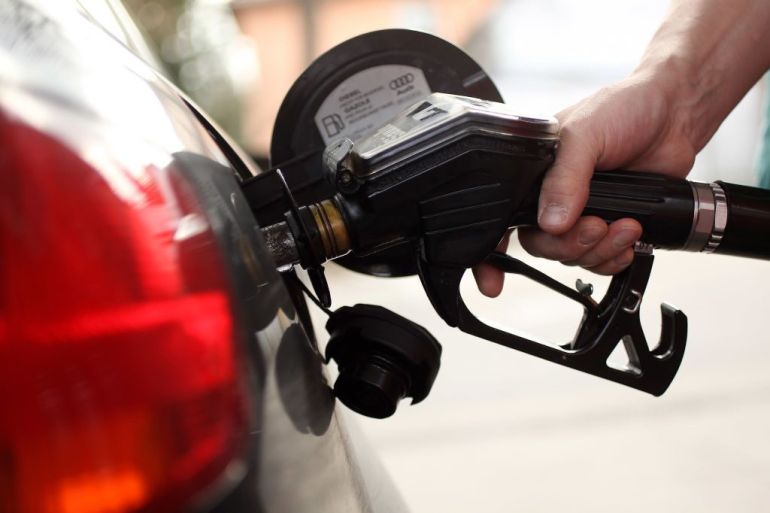US: Gasoline average price tops $5 per gallon in historic first
The average price for regular unleaded petrol rose to $5.004 a gallon on Saturday from $4.986 a day earlier, AAA says.

The price of US gasoline has averaged more than $5 a gallon (3.79 litres) for the first time, data from the AAA showed, extending a surge in fuel costs that is driving rising inflation.
The national average price for regular unleaded petrol rose to $5.004 a gallon on Saturday from $4.986 a day earlier, AAA data showed.
Keep reading
list of 3 itemsOil extends four weeks of gains amid tight supply
Brent crude climbs above $120 a barrel as China eases lockdowns
High gasoline prices are a headache for President Joe Biden and congressional Democrats as they struggle to maintain their slim control of Congress with midterm elections coming up in November.
Biden has pulled on numerous levers to try to lower prices, including a record release of barrels from US strategic reserves, waivers on rules for producing summer gasoline, and leaning on major OPEC countries to boost output. Yet fuel prices have been surging.
There are several reasons for the surge in petrol prices.
Americans typically drive more starting around Memorial Day, so demand is up. Global oil prices are rising, compounded by sanctions against Russia, a leading oil producer, because of its war against Ukraine. And there are limits on refining capacity in the United States because some refineries shut down during the pandemic.
US road travel, however, has remained relatively strong, just a couple of percentage points below pre-pandemic levels, even as prices have risen.
Still, economists expect demand may start to decline if prices remain above $5 a barrel for a sustained period.
“The $5 level is where we could see very heavy amounts of gasoline demand destruction,” Reid I’Anson, senior economist at Kpler, told the Reuters news agency.
Adjusting for inflation, the US gasoline average is still approximately 8 percent below June 2008 highs of about $5.41 a gallon, according to US Energy Department figures.
Consumer spending has so far remained resilient even with inflation running at its highest level in more than four decades, with household balance sheets shored up by pandemic relief programmes and a tight job market that has fuelled strong wage gains, especially for lower-income workers.
Gasoline product supplied, a proxy for demand, was 9.2 million barrels per day last week, according to the US Energy Information Administration, broadly in line with five-year seasonal averages.
The high prices for drivers come as the big oil and gas companies post bumper profits. Shell reported a record quarter in May and Chevron Corp and BP have posted their best numbers in a decade.
Other majors, including Exxon Mobil and TotalEnergies, as well as US independent shale operators, reported strong figures that have spurred share repurchases and dividend investments.
Numerous companies have said they will avoid excessive investment to boost output due to investors’ desires to hold the line on spending, rather than respond to $100-plus barrel prices that have persisted for months.
Refiners have been struggling to rebuild inventories which have dwindled, especially on the US East Coast, reflecting exports to Europe where buyers are weaning themselves off Russian oil.
Currently, refiners are utilising about 94 percent of their capacity, but overall US refining capacity has fallen, with at least five oil-processing plants shutting during the pandemic.
That has left the US structurally short of refining capacity for the first time in decades, analysts said.